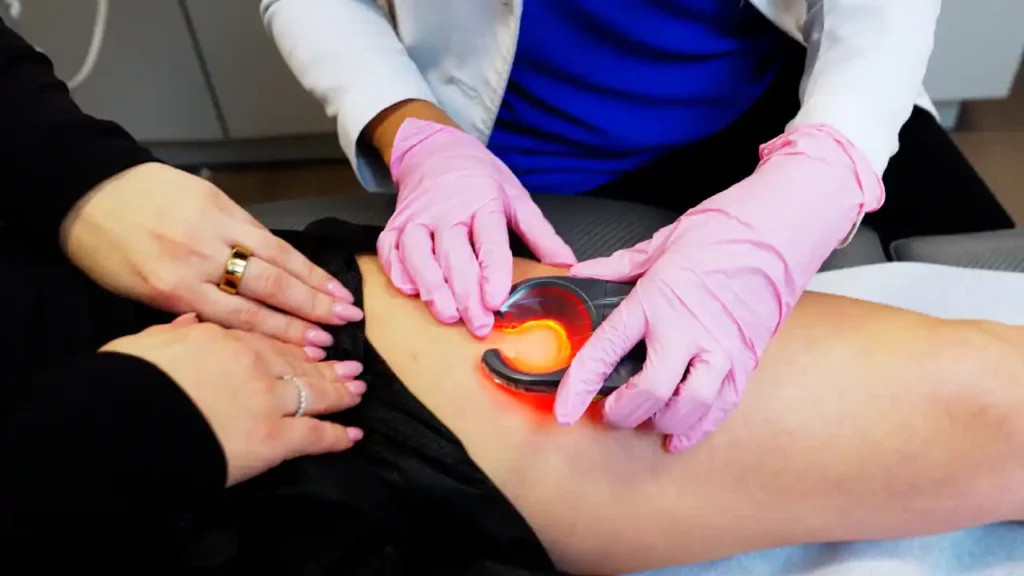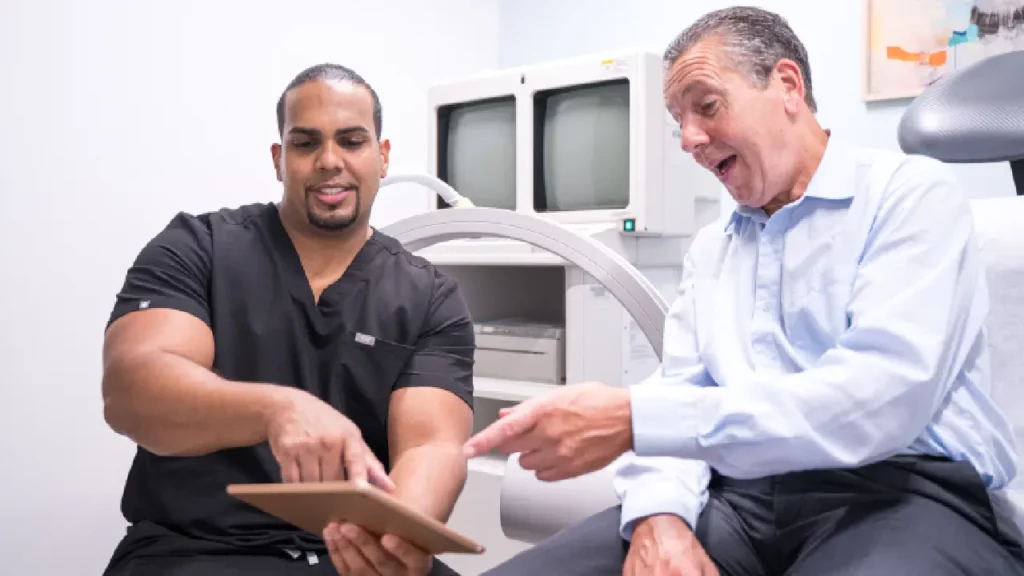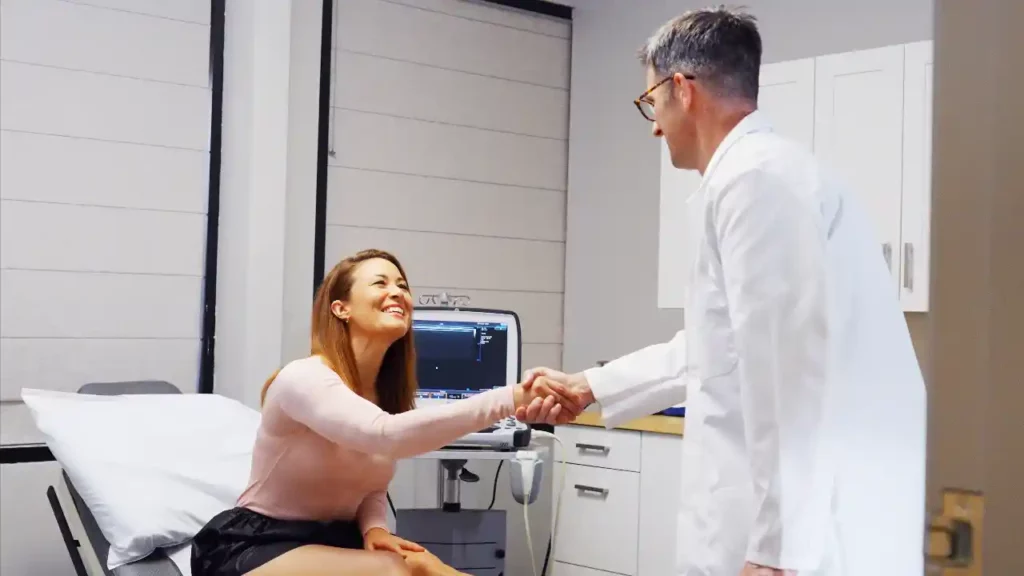Meet the Most Effective Treatments for Venous Insufficiency!
Venous insufficiency is a condition that affects millions of people every year, often in the form of swelling, aching, or visible veins in your legs. You may have noticed that your legs feel tired or heavy, and the skin near your veins has a different texture or color. Perhaps you’re seeing spider veins or varicose veins creeping up your legs. If these sound familiar, you may have venous insufficiency, which causes blood to pool in your veins instead of flowing to the heart.
If left untreated, venous insufficiency can worsen, causing severe discomfort and increasing your risk for more serious conditions. At Vein Treatment, we offer a variety of minimally invasive venous insufficiency treatments that can help you feel better and regain control of your health. Our board-certified vein specialists are dedicated to providing the best care, utilizing the latest technology to treat venous insufficiency effectively. Keep reading to learn about the most effective treatments available for venous insufficiency!
What is Chronic Venous Insufficiency?
Chronic venous insufficiency (CVI) occurs when the veins in your legs struggle to push blood back up toward your heart, causing blood to pool in your veins. This happens when the one-way valves in your veins become weak or damaged. These valves are supposed to prevent blood from flowing backward, but when they don’t work correctly, blood can accumulate in the veins, leading to symptoms like swelling, pain, and visible veins.
CVI is most common in the lower legs because gravity works against the blood flow as it returns to the heart. Over time, this can cause discomfort and even permanent damage to your veins. Fortunately, venous insufficiency treatment can help restore proper blood circulation.
Possible Signs and Symptoms of Venous Insufficiency:
- Swollen legs and ankles, especially after standing or sitting for long periods
- A feeling of heaviness or fatigue in the legs
- Visible varicose veins or spider veins
- Leg cramps, especially at night
- Skin discoloration or changes in texture around the ankles
- Itchy or dry skin over affected veins
- Throbbing or aching pain in the legs, particularly after physical activity
- Ulcers or sores on the skin that don’t heal properly
The Risk of Leaving Venous Insufficiency Untreated:
- Increased swelling and discomfort in the legs
- Worsening of varicose veins and spider veins
- Development of venous ulcers or open sores that are hard to heal
- Higher risk for blood clots, which can lead to complications like deep vein thrombosis
- Chronic pain that interferes with daily activities
- Skin changes, including thickened, discolored skin, especially near the ankles
- The potential for chronic inflammation, leading to permanent damage to the veins
Your Venous Insufficiency Treatment Options
Thankfully, treatment options for venous insufficiency have improved dramatically over the years. At Vein Treatment, we offer several minimally invasive vein treatments to relieve symptoms and address the root causes of the condition. Here’s a look at some of the most effective minimally invasive vein treatments we offer:
Compression Stockings
Compression stockings are one of the simplest and most widely recommended treatments for venous insufficiency. They apply gentle pressure to the legs, helping blood flow more efficiently toward the heart and reducing swelling. The stockings work by helping the veins contract and pushing blood upward, relieving pressure and discomfort. Though they won’t correct the underlying cause of venous insufficiency, they can help manage symptoms.
Endovenous Laser Ablation (EVLA)
Endovenous laser ablation (EVLA) is a minimally invasive procedure that utilizes laser energy to close off damaged veins. A small laser fiber is inserted into the affected vein through a tiny incision, heating the vein and causing it to collapse and seal shut. Consequently, blood is redirected to healthier veins. EVLA is an effective solution for treating larger varicose veins, providing long-lasting results with minimal discomfort.
Radiofrequency Ablation (RFA)
Radiofrequency ablation (RFA) is another minimally invasive treatment for venous insufficiency that uses radiofrequency energy to close off problematic veins. Similar to EVLA, a catheter is inserted into the vein, and radiofrequency waves are used to heat and collapse the vein. This procedure is also minimally invasive, requires only local anesthesia, and effectively treats both varicose veins and venous insufficiency.
VenaSeal
VenaSeal is a newer treatment for venous insufficiency that uses medical adhesive to close off problematic veins. During the procedure, a small amount of adhesive is applied inside the vein, which causes it to seal shut. This non-thermal treatment doesn’t use heat or lasers, making it a good option for patients who prefer a less invasive approach. VenaSeal is quick, effective, and requires no stitches, and patients can return to normal activities very soon after the procedure.
ClariVein
ClariVein is a unique treatment option for venous insufficiency that combines mechanical and chemical methods. A small catheter is inserted into the affected vein, and a rotating wire damages the vein wall. At the same time, a sclerosant solution is delivered into the vein, causing it to collapse. ClariVein is a minimally invasive procedure with minimal downtime.
Sclerotherapy (for Spider Veins)
Sclerotherapy is a highly effective spider veins treatment. During the procedure, a sclerosing solution is injected into the veins, causing them to collapse and fade from view. The procedure is relatively quick, requires no anesthesia, and has minimal recovery time. Sclerotherapy is ideal for treating smaller veins that are visible near the surface of the skin, such as spider veins.
Ambulatory Phlebectomy (for Varicose Veins)
Ambulatory phlebectomy is a treatment for larger varicose veins. It involves making small incisions in the skin through which the varicose veins are removed. This procedure is typically performed under local anesthesia and is highly effective for treating visible, bulging veins. Although it may require more recovery time than other treatments, ambulatory phlebectomy provides excellent long-term results and immediate relief from symptoms.
Venous insufficiency can cause a range of uncomfortable symptoms, but with the right treatment, you don’t have to suffer. Whether you’re dealing with spider veins, varicose veins, or more severe circulation issues, our expert team at Vein Treatment offers a variety of effective vein treatments tailored to your needs. Contact us to schedule a consultation and explore your minimally invasive venous insufficiency treatment options today. Visit our vein clinics across New York, New Jersey, California, and Washington, D.C., today to learn more.









